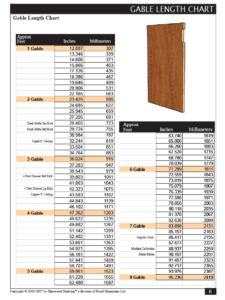Knowing how to calculate the drawer bank heights, using KCD software, is useful. This post will tell you the easiest way to figure that out. When calculating the drawer bank height it is much easier to work in metric rather than imperial measurements. So instead of using 86 – 27/64th using 2195 mm is a lot simpler.
When KCD is set to dimensions Level 3, you can see the gable height, but can’t see the overall drawer bank height. You can see a bunch of individual measurement, but it can get a little difficult to add all those up. You would need to consider the height of the kick, how much of the fixed shelf is exposed, the 3mm reveal between each drawer, and the amount of top fixed shelf that is seen, and so on.
But what measurement do we have that makes it a bit easier? When you’re first starting out it is a good idea to hide the doors and drawers making it easier to see what you’re looking at. Once the doors and drawers are hidden, you’re not able to see the overall drawer bank height but we can see the overall space above the drawers.
For the drawer bank height, we want to measure from the bottom of the gable to the top of the fixed shelf above the drawers. Looking at the opening above the drawer bank the measurement start on top of the fixed shelf above the drawer but ends below the top fixed shelf. The top fixed shelf is ¾” thick or 19mm (actually 19.05mm but we won’t worry about that).
Now, because of rounding issues with KCD instead of adding 19 for the top shelf we’re going to subtract another 3mm or a total of 16mm. You’re going to have to trust me on this one. So, using 16mm this becomes a simple math equation.
Take the height of the opening and add 16mm. For example, if the tower top opening is 1168 then add another 16 mm (1168 + 16 = 1184). Now take the gable height of 2195 – 1184 = 1011. This final measurement MUST match the Gable Length Chart exactly. If not, you’ve made an error in your calculations.
So for this bank height it is 1011 mm and then we can convert that back to imperial measurements to the 3rd decimal place. Now of course the easy way to convert this is just look on the Gable Length Chart and you can see that 1011 = 39.803”. For those of you who might not know how to convert from metric to imperial you need to memorize 25.4
Imperial numbers are always smaller than millimeters, so if I have 1011mm I need to make that smaller so I will divided by 25.4 to get 39.803149 but rounding to the 3rd decimal place its 39.803”. So just memorize 25.4 and you’re all set to convert mm to inches and visa versa.


